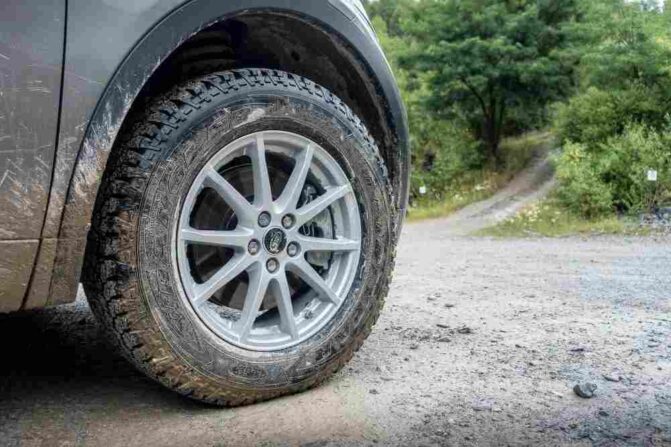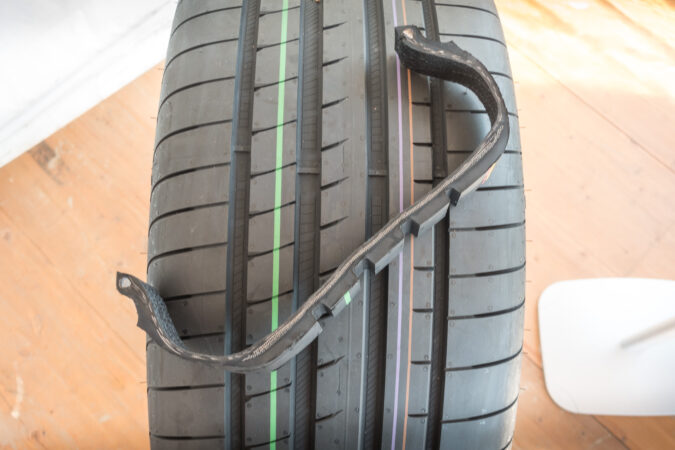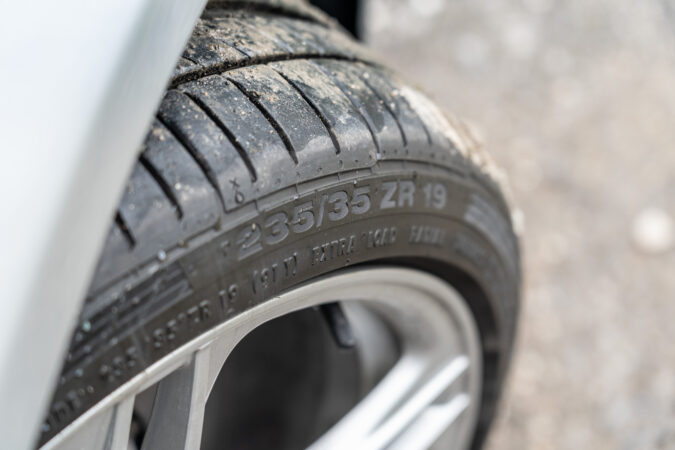What’s the Load Range D? Have you ever been curious about the letters and numbers on the side of your automobile tire? These values give vital information about the tire. Some critical specifications, such as the tire load index, should be familiar to every automobile owner. It will be simple for you to purchase a tire for your vehicle using this information.
Tires on automobiles do not last indefinitely. They’ll eventually wear out, and you’ll have to replace them with a new tire. Online buying is one of the most convenient ways to purchase a tire. The tire service description will assist you in selecting the appropriate tire for your vehicle and needs.
Learn more about the tire load index, why it matters, Load Range D, and how to read the tire load rating chart in this article.
- What Is The Tire Load Index?
- Chart Of Load Range
- Importance Of Ply Ratings
- Summer vs Winter Tire Indexes
- Vehicle Tire Size
- Calculate Tire Load Capacity
- Load Range D vs Load Range C
- How To Read Load Ranges
Tire Load Index
When correctly inflated, the tire load index reveals a tire’s load-carrying capabilities. It indicates how much weight your tire can withstand. Tires with a high tire load index may bear more weight. If you buy a tire with a lower tire index, your vehicle will not be able to support its original weight.
On the side of the tire, next to the load range, is the tire load index. The unit of measurement is commonly kilos or pounds. The difference between tire load index and load range is one of the most common misunderstandings. The load range exposes the construction of the tire.
Although the range seems perplexing, the tire load index indicates the exact value. By depending just on the load range, a tire’s capacity can be deceived. For example, some load range E tires may have a load index that is similar to or lower than a load range D tire.
Tire Load Rating Chart
A load range chart can help you figure out how far your vehicle’s tires can go. The load index is a numerical value. Each of the letters and digits on the tire’s side signifies a different meaning.
P195/60R15 87S, for example, is composed of the following elements:
- P: Tire Type
- 195: Section Width
- 60: Aspect Ratio
- R: Construction of tire
- 15: Diameter of tire
- 87– Tire Load Index (Maximum Carrying Capacity)
- S– Rating for Speed (Maximum Speed Capacity)
It’s worth noting that a tire’s maximum load capacity isn’t always the same as its typical capacity. The load index of a tire is determined by its maximum fill pressure, not the air pressure level recommended by the manufacturer. A load index chart will help you convert the tire’s load index to its weight.
What Is Load Index On Tires
The tire load index is important because it represents the maximum weight that a fully inflated tire may safely carry. This number, which can be found on the side of the tire, will assist you in preventing your car from becoming overloaded. When purchasing new tires for your car, the load index is also quite important.
With this knowledge, purchasing the appropriate tire for your needs becomes a breeze. When choosing a tire, look for one with a similar or higher load index. If you replace a tire with a lower load index than the original, you’ll almost certainly end up with an overload. Overloading a tire can cause it to wear out early or fail completely.
Summer vs Winter Tire Load Index
The load index of a summer tire and the load index of a winter tire are not always the same. If the tread depth or diameter varies, the tire’s load capacity index is likely to be varied. Tires face more weather problems in the winter than they do in the summer.
Driving gets more difficult as braking distances become greater on snow or ice. This indicates that when the weight of the vehicle increases, the driver’s control over the vehicle decreases. As a result, pay attention to the various load capacities and ensure optimal safety.
Tire Size
Tire sizes usually begin with a letter denoting the type of tire and end with a two-digit number indicating the rim size. Additional tire size and manufacturing information can be found between these sections.
1. Type Of Tires
The first letter denotes the type of vehicle on which the tire should be installed. P stands for passenger car or light-duty truck. These tires, in general, require lower pressures than other types of tires. The LT designation denotes a light-duty truck; however, larger 3/4 and one-ton pickups are frequently seen.
If there isn’t a letter at the start, the tire is a Euro-Metric tire, which is commonly found on passenger cars. The P in P235/75R15 denotes that the tire is suitable for use on a passenger vehicle.
2. Width Of The Sidewall
If your tire does not have a letter at the beginning, look at the three numbers after the letter or the first three numbers in front of a slash mark. These figures represent the tire’s width from sidewall to sidewall in millimeters.
The metric system is used for the majority of tire measurements, regardless of the tire manufacturer. P235/75R15, for example, has a width of 235 millimeters between sidewalls.
3. The Aspect Ratio
A two-digit number will appear after the slash mark. This number refers to the aspect ratio, which is the ratio of the height of the sidewall to its width. The aspect ratio in the example tire, P235/75R15, is 75. The sidewall height of this tire is 75% of the width of the sidewall.
4. Manufacturing Of Tires
One of three letters, R, B, or D, will appear after the aspect ratio. The construction of the tire is described in this letter. Radial tires are identified by R because their internal cords are arranged at a 90-degree angle to the tire’s centerline.
The D in this position denotes the diagonal pattern of bias-ply tires. The cables cross each other at 30 to 45-degree angles on these tires. Bias-ply tires, which were popular in the early twentieth century, are no longer in use. Radial tires, which are more durable and pleasant, have mostly replaced them.
The format of belted tires is indicated by the letter B. These tires combine a diagonal bias-ply design with additional belts inside the construction. Although uncommon, these can be found on off-road trucks, wagons, and vintage cars. The R in P235/75R15 indicates that the tire’s structure is radial.
5. Dimensions Of Wheels
While the sidewall width is measured in millimeters, the wheel diameter is measured in inches (the last digits after the construction letter). The bigger the number, the larger the diameter of the wheel. If you replace your rims, you’ll need to replace your tires as well.
When switching wheel sizes, be cautious because larger wheels have an impact on vehicle handling. The 15 at the end of the sample tire, P235/75R15, indicates that it must be installed on a 15-inch diameter wheel.
6. Speed Rating & Load Index
There are two digits and a letter after the size information. The numbers represent the tire’s load rating, while the letter represents its speed rating. In the case of P215/65R15 85H, the 85 represents the load index, also known as the tire ply rating. And the H represents the speed rating, which indicates the maximum speed at which the tires should be used. This speed varies between 3 and 186 miles per hour.
Calculate Tire Load Capacity
Take the vehicle’s gross weight and divide it by four to get a reasonable estimate of each tire’s load range capabilities. Each tire should be able to securely handle at least 1,125 pounds if the vehicle’s gross weight is 4,500 pounds.
On the other hand, the gross vehicle weight does not account for additional loads such as the driver’s weight. As a result, you should never choose a tire based solely on its minimal weight capacity. Choose a tire with a higher load capacity, or “reserve,” which will help the car withstand and adapt to more significant crises when loaded.
Determining Load Ratings
When developing tires, tire manufacturers take the load rating into account. Even after the tire is manufactured, it is subjected to intensive real-world testing to guarantee that it can meet or surpass its designated load capability. Manufacturers provide a two- or three-digit load index number to denote the maximum load rating when these tests are finished.
On the sidewall of the tires, maximum load values in pounds or kilograms are also listed. Car and light-duty truckload indexes currently range from “70” to “110” or 761 to 2337 pounds, respectively. The greater the load-carrying capacity of a tire, the higher the load index number:
Load Range C vs D
Here’s a comparison between Load Range D and Load Range C…
Load Range D vs C #1. Tire Load Range:
A tire’s load range specifies how much weight it can carry at the highest specific pressure authorized by the industry. Light vehicle applications are catered to in weight ranges C and D. The on-road performance of two tires of the same size will differ. A comparison between these two is necessary to show the users the exact difference.
However, they do not differ significantly. The main differences between these two big-capacity tires are the PSI (pounds per square inch) and ply rating. Load range D tires require higher inflation pressure due to their increased capacity. Unless you cannot expect the ultimate capacity, you must inflate them to 65 lbs psi to bear the maximum load.
Load Range D vs C #2. Pounds Per Square:
On the other hand, Range C requires 50 pounds per square inch of tire pressure. When inflated to 50 psi, a load range D tire has the same load capacity as a range C tire. The riding characteristics will be identical as well. Load limit D will have a higher capacity if just inflated to the maximum pressure. It will also deliver a more difficult riding experience.
Load Range D vs C #3. Load Measurement:
A load measurement D tire with low air pressure is recommended for a better ride. When extra loading capacity is required, you can inflate it to full pressure (65 psi) if you want the optimal performance; whether the load range is D or C, you must inflate it to its maximum pressure. The highest psi rating also ensures the most extended life.
Load Range D vs C #4. Overall Capacity:
You must rely on the overall capacity to identify the optimal fit. To a lesser extent, the axle capacity and the wheel capacity will decide this. You won’t be able to carry additional weight simply by increasing the loading capacity D. Despite their higher ratings, axle capacity is the deciding factor in this case. The weight restriction is unaffected if the vehicle is found to have three axles.
When it comes to the integrated weight capacity, only the maximum weight of the trailer’s lowest-rated component, such as the tire, axle, wheel, and so on, could be carried. Therefore, a set of identical size load range D tires would, of course, survive longer than load range C tires. However, it has little to do with the capacity unless other factors like size, tire pressure, ride pressure, and so on differ.
Load Range D vs C #5. Ply Construction:
Tire ply refers to the number of layers of fabric used in the tire’s structure. Historically, the more plies a tire had, the more weight it could carry. For Range D tires, they usually have an 8-ply rating, whereas Range C tires typically have a 6-ply rating. This difference can impact the tire’s resilience and its ability to resist punctures, with the Range D tires having a slight edge due to their additional ply layers.
Load Range D vs C #6. Durability and Wear:
With the increase in ply rating and the ability to handle a higher PSI, Range D tires often exhibit a more extended lifespan, especially under heavy load conditions. Conversely, Range C tires, being slightly softer due to their lower ply rating and lesser inflation pressure, might wear out faster under similar circumstances. So, for those who drive frequently on rough terrains or carry heavy loads, Range D could be the more economical choice in the long run.
Load Range D vs C #7. Ride Comfort:
While Range D tires might provide more capacity and durability, this might come at a slight compromise to the comfort of the ride. Due to their higher inflation pressures and added ply, Range D tires can give a firmer ride. In contrast, the softer build and lower PSI of Range C tires can offer a smoother experience, especially on city roads.
Load Range D vs C #8. Price Points:
Another significant difference between the two is the cost. Range D tires, with their added features and benefits, generally come at a higher price point compared to Range C. For those on a tight budget, this could be a deciding factor. However, the initial investment in Range D tires might save money in the long term due to their extended durability.
Load Range D vs C #9. Suitability for Terrain:
Both these tire ranges cater to different driving needs. Range D, being more robust, is better suited for rugged terrains and off-roading experiences. They are ideal for those who often find themselves on unpaved roads or require higher load capacities. On the other hand, Range C, offering a smoother ride, is more tailored for urban environments and regular highway drives.
Load Range D vs C #10. Safety Considerations:
Safety is paramount when selecting tires. With their higher ply and inflation pressure, Range D tires generally provide more stability, especially under heavy loads. However, it’s essential to remember that merely upgrading to a higher load range without considering the vehicle’s axle capacity could lead to potential safety risks. Always ensure compatibility before making a switch.
Deciding between Load Range D and C for car tires largely depends on individual requirements. From driving terrains, and load capacities, to budget constraints, several factors come into play. By understanding these differences, drivers can make an informed decision tailored to their unique needs, ensuring safety, efficiency, and optimal performance on the road.
How To Read Tire Specs
When you look at a tire closely, you’ll notice that it contains a lot of information. You’ll find everything from the manufacturer’s name to the tire size and load rating on the sidewall. To interpret these figures, you must first understand what values to search for and what they signify.
The tire type, width, aspect ratio, construction, wheel rating, load index, and speed rating are all listed on the sidewall. The values can be identified based on their relative positions and the number of digits or letters they include. The Tire and Rim Association standardized these values for all American tire manufacturers.
Uniform Tire Quality Grading (UTQG), is a term that refers to information on traction and temperature ratings on some tires. In rainy situations, AA traction ratings outperform the other classes (AA, A, B, and C).
The temperature classifications pertain to how well the tires dissipate heat at different speeds. Those with an A rating perform well at speeds exceeding 115 mph. B-rated tires perform best between 100 and 115 mph, whereas C-rated tires perform best between 85 and 100 mph.
The first thing to check for is a series of letters and numbers that begins with P, LT, or no letter at all. P235/75R15 and LT215/65R15 are two examples. This alpha-numeric code contains a lot of information, including the tire type, width, aspect ratio, construction, and diameter.
You’ll see the load index and speed rating next to this extended code, which you’ll need to know to choose the correct tires for your loaded work truck. To get the most out of this data, you must first comprehend what the tire size information represents, which is discussed in detail above.
Load Range D vs C
A load range D tire may carry more weight than a load range C tire when properly inflated. At 65 psi, load range D tires can carry about 1,610 pounds, whereas load range C tires can carry 1,360 pounds at 50 psi.
As a result, if your vehicle’s OE tires are load range D, you should only replace them with D or upper range tires. Tires in the load range D have an 8-ply rating, while those in the load range C have a 6-ply rating.
Load Range D vs E
A tire’s load range determines its toughness and permissible air pressure. Tires are made to particularly support the weight of your vehicle, whether it’s a heavy truck, a small truck, or a passenger car. Every set of car tires has a distinct load range, denoted by letters.
When the tires are properly inflated, load range E has a larger carrying capacity than load range D. At 80 psi, a tire with an E-load range is designed to carry 1,520 pounds. On the other hand, load range D tires have a capacity of 1,220 pounds at 65 psi. On the other hand, Larger D tires may have the same or greater load capacity than smaller E tires.
Do Tire Load Range Ratings Have An Impact On Performance
Yes, tire load ratings have an impact on the operation of your vehicle, especially if you move or tow materials, commodities, boats, trailers, and other such items. The weight of your car and whatever you’re towing exerts extra pressure on your tires, which can cause early wear or a blowout. Because the automobile tire load rating is only correct when the tire is properly inflated, it’s critical to check your tire’s air pressure on a frequent basis.
Similarly, before your next haul or tow, inspect your tires for symptoms of premature wear to avoid costly problems while on the road. A tire that falls within the appropriate range of the load rating chart will safely carry the loads you put on it (if it’s inflated properly), leading to better ride and economical fuel consumption or as efficient as possible depending on the load being handled.
Where Can I Locate The Tire Load Range Rating
The load index number is usually found near the end of an alphanumeric format on the tire’s sidewall. The width, sidewall height, diameter, and maximum speed rating of the tire are also included in this format.
The maximum load rating is found on the sidewall’s inner diameter. Both may be difficult to find on some tires, so you may need to use a torch and a keen eye to locate the index number. Automotive manufacturers usually indicate the recommended tire size and load index rating on a metal plaque on the driver’s side door jamb or a sticker on the rear left passenger side door jamb.
The amount of weight distributed to each wheel is also indicated, which is helpful when selecting a tire with sufficient load capacity. The load range is usually not displayed on tires designed for normal cars such as sedans, hatchbacks, crossovers, compact to medium-sized SUVs, minivans, and light to medium-duty pickup trucks.
In any case, these vehicles aren’t designed to carry a lot of weight. As a result, they frequently have a set of 4-ply tires, which are adequate given their average weight capability. Because they don’t require the increased load-carrying capacity, their normally reinforced tires have no load range markings. Nonetheless, some heavier-duty vehicles, such as commercial trucks, would always have it.
Markings On The Sidewall
The load range is usually near the end of the markings on the sidewall. For example, it might be written as “P 245/45 R20 103W SL,” for example. Alternatively, some tires may imprint the entire text, such as “P 245/45 R20 103W Load Range SL,” only to make things clearer. On the other hand, others would add a forward slash to the load range reading, such as “P 245/45 R20 103W/SL.” In the end, it’s the letter that matters.
The load range will only appear as letters, to be more specific. For an accurate measurement of its ply count and maximum air pressure at full load, as indicated by the load index,’ you’ll need to consult a chart. Finally, when looking for a set of tires that can easily handle your vehicle’s full weight, both the load range and load index must be taken into consideration.
Tire Facts: Understanding Load Index and Capacity
- The alphanumeric code on a tire sidewall contains valuable details about the tire, such as the diameter, width, rim size, ply rating, load index, and speed rating.
- A typical code on a Light Truck & SUV tire looks like; 35 (Diameter) x 12.5 (Width) R20 (Rim Size) E (Ply Rating).
- The load index is a numeric value on a tire sidewall that indicates the weight a tire can carry and ranges from 0 to 150.
- The load capacity of all tires combined is determined by multiplying the load capacity of a single tire by the number of tires.
- Always install tires with a load index that is equal to or greater than the original factory-installed tires.
- A tire load capacity chart is required to understand the complete meaning of the alphanumeric code on a tire sidewall.
- The load range is an older measurement standard of “PLY Rating,” which refers to the construction of the tire made out of rubber and cord layers.
- The load range indicates how tough the tire is and the allowable PSI.
- Modern tire construction uses fewer plies while still maintaining the carrying capacity, so the load range number no longer represents the number of plies.
- An “E” load range indicates that a tire is equivalent to a 10-ply construction tire, but it is not necessarily built with 10 plies.
Load Range D: In Conclusion…
Choose tire sizes and load ratings specified by the manufacturer when installing tires on your truck. If you add service bodies, platforms, tow hooks, or other accessories to your vehicle, the size and strength of the tires you need will change. For such vehicle modifications, consult an expert on the recommended chassis and tire loads.
You can ensure maximum productivity from your customized work vehicle by combining the correct tires with it. The tires you install on your truck are only one part of customizing your vehicle to meet your demands. Service bodies and other accessories turn your new car into a workhorse.




